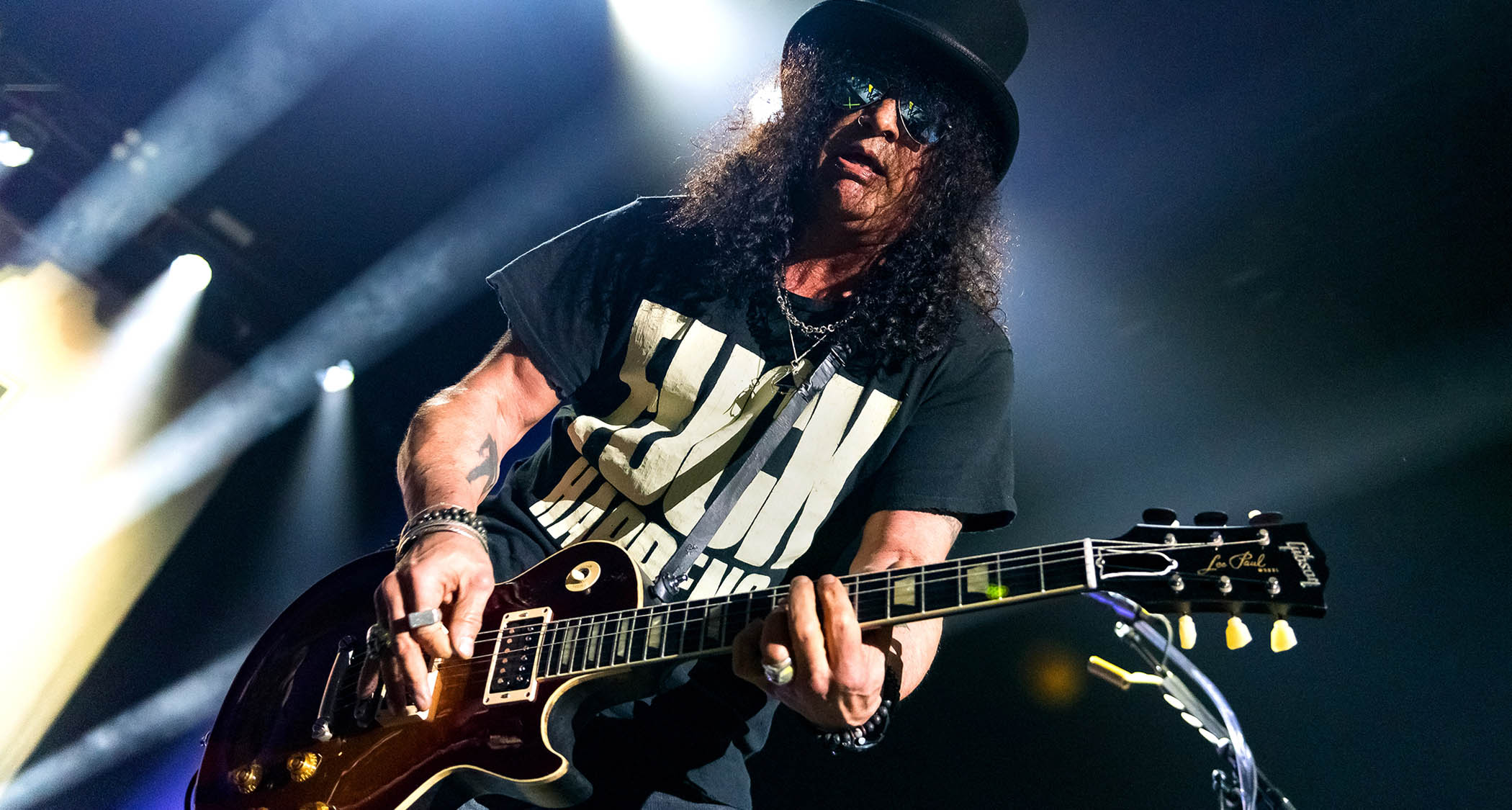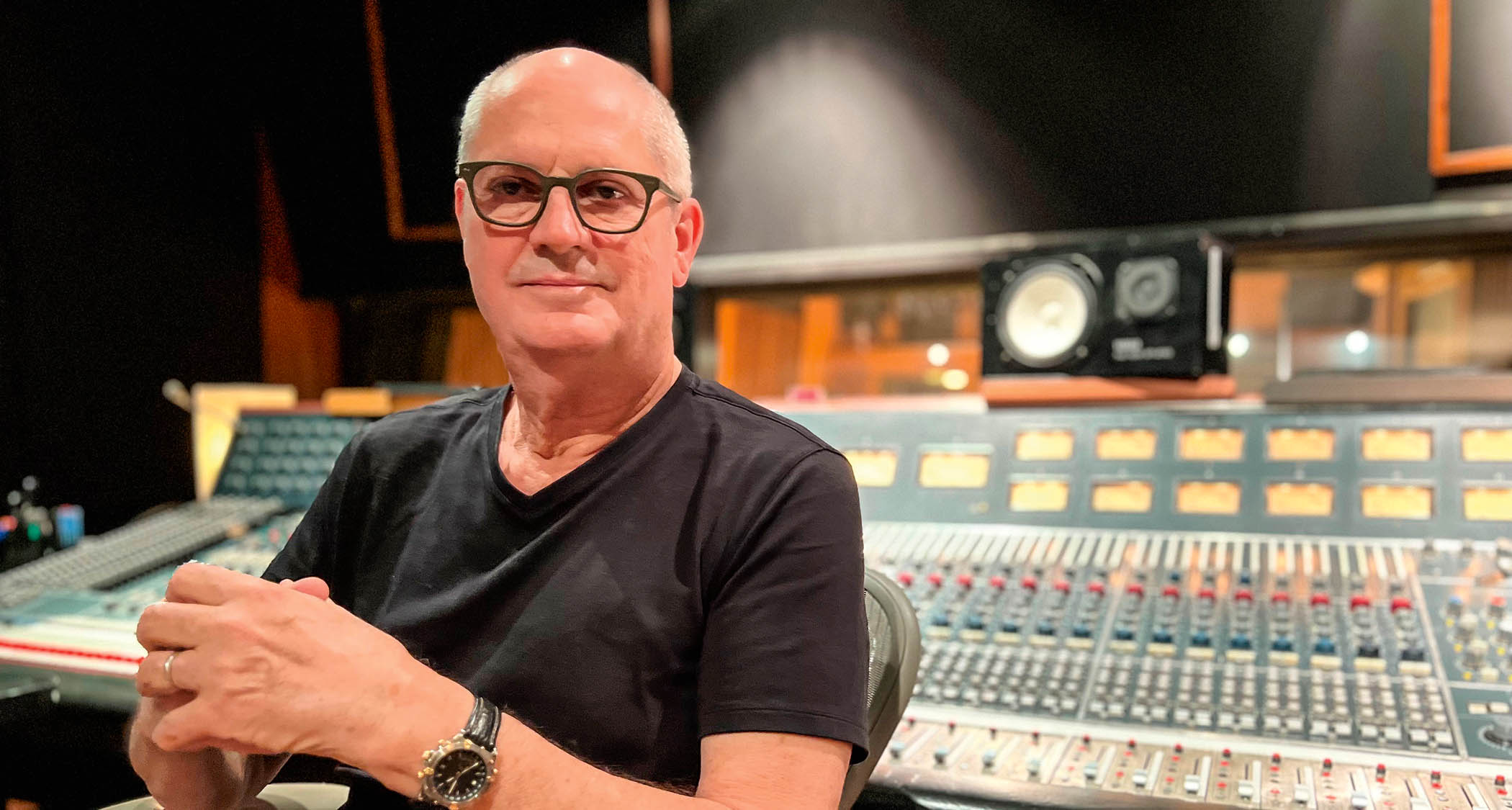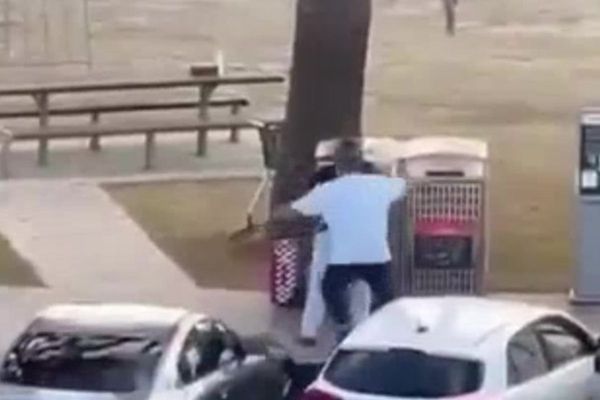
Not many people can say they’ve had a front row seat to Slash’s creative process – but producer Mike Clink really has. He was the man at the helm for Guns N’ Roses’ legendary 1987 debut album Appetite For Destruction and the band’s subsequent releases GN’R Lies, Use Your Illusion I and II and The Spaghetti Incident?
The partnership would continue through to the 1995 debut full-length from the guitarist’s next band, Slash’s Snakepit, and Clink would also gain recognition for his work with other rock giants including Whitesnake, Megadeth and Mötley Crüe.
When Slash announced his solo album Orgy Of The Damned in March, it was revealed that he’d once again teamed up with Clink – someone who helped create his most famous recordings and arguably knew his tone better than anyone else.
When Mike connects to discuss the making of Orgy Of The Damned and his long association with Slash, he begins by remarking upon how far the guitarist has come since those crazy days in the ’80s, when Guns N’ Roses were making their reputation as the ‘Most Dangerous Band In The World’.
“I haven’t spoken about this stuff in a long time,” Mike says, “but all of Guns N’ Roses were very young back then. Yeah, they loved to party, but when they came together in the studio, they were very committed. On this new record, however, the change in Slash is clear. It’s all part of maturing and growing up.
“Slash is more focused than ever and knows exactly what he wants to do. He’s also more in the pocket, which is a blues thing. Usually I have to tell guitarists to hold back. They get excited and want to push, but I rarely had to bring that to Slash’s attention. He’s so fluid these days, his left hand makes it look seamless…”
Let’s start with new album’s the lead single Killing Floor, featuring Brian Johnson. The video for this track looks like it’s from Studio Two at EastWest in LA?
“That’s it! EastWest is the iconic place where Frank Sinatra, The Beach Boys and Red Hot Chili Peppers made records. That particular room is live, but not overly live, with an old Neve console and high ceilings. I’m really big on recording everybody together. The results are different to people recording separately. You can make changes instantly.”
But not all of it was cut there?
We asked Brian to bring it down to his natural voice and it suddenly fit very well. Slash picked some really amazing artists for this record
“We went to Florida and recorded in Sarasota where Brian Johnson lives. There’s a studio down there called Burnt Orange. He asked if he could do his vocals from the control room and I told him I didn’t mind. He asked if he could use a handheld mic and again, I told him I didn’t care. It ended up being one of the most fun sessions I’ve ever done.
“I’d never worked with him before and didn’t know what to expect. He was perfect. I was expecting those higher-up AC/DC vocals, and that’s where he started for maybe one or two takes.
“Slash and I looked at each other and weren’t sure if that was going to work. We asked Brian to bring it down to his natural voice and it suddenly fit very well. Slash picked some really amazing artists for this record.”

You managed to keep a level of bluesy rawness within the recordings, while also upholding the standards people expect from modern production. It’s not an easy balance to get right.
“I’m no blues expert, but the stuff from the ’40s, ’50s and ’60s was really raw. They would go into the studio after a show and record it live with just a couple of microphones, sometimes even just one.
“They were rough recordings but the performances were great because the band had just gotten off stage and felt hyped. That’s the roots of blues. Nowadays people expect something different.
“I hear so many blues records that involve drum machines and samples, with no natural feel. All of these songs were recorded live. I got the best performances I could from the band, but it all started in rehearsal roughly three weeks ahead.
“We worked out the tempos and the arrangements. It wasn’t all etched in stone – I like that spark of spontaneity. But we knew what we were doing when we hit the studio.”
What do you remember about what gear got used on what tracks?
“Back when we did Appetite For Destruction, it was all about the Les Paul and Marshall. On the Use Your Illusion albums, Slash started to stretch out a little bit. I remember I had a 1965 ES-335, and there was one song it would have been perfect for, because that one called for a different tone to a Les Paul. So I had his tech [Adam Day] bring out my guitar. Slash picked it up and wasn’t that impressed.
“It was big and quite different, so after playing it on the song a few times he handed it back saying, ‘Hmm, this isn’t really working for me!’ Fast forward to this record and I walk into the rehearsal studio and I saw a 335 sitting on the stand. I said to his current tech [Craig DeFalco], ‘Wow, Slash actually owns a 335!’ And he said, ‘Oh yeah!’
“That was a big part of this record, along with the Les Pauls. The 335 had a phenomenally warm tone. He’s definitely gotten more experimental with his sounds, and obviously knew that a 335 would be good for this record. I was happy to see that, because they’re wonderful guitars.”
This is notable for being the first album he’s made since partnering with Magnatone.
“Yeah, he was playing his Marshall the day I walked in but I also saw a Magnatone sitting there. We moved on to another song and he plugged into it. The sound was right and very appropriate for this record.
“He wanted to use the Marshall on a couple of songs but when we discussed things in the control room after listening back, the tone just wasn’t working. No disrespect to Marshall. I love their amps and own many of them, but for this record the Magnatone really spoke for everything he played.”
We did a lot of experimenting, sometimes working between three different guitars to find the one that spoke best for the music
There’s a lot of tonal versatility, from the single-coil sounds on Living For The City to a semi-hollow openness on Stormy Monday…
“I can’t remember specifically what was used on Living For The City, he has so many different guitars and each one has a unique voice. He will have an idea of which one will work best for whatever song we are working on.
“Sometimes he might pick something up and I would go, ‘Hmm, let’s try something else, we can always come back to this one!’ We did a lot of experimenting, sometimes working between three different guitars to find the one that spoke best for the music.”
It must have been nice to be reacquainted with that Kris Derrig 1959 Les Paul Standard replica… It’s come a long way since 1987!
“Absolutely. It’s a special guitar that clearly means a lot to him. That’s his baby! When we did Appetite, it was that Les Paul into a Marshall. With the popularity of that record, all the aspiring guitar players wanted a Les Paul. I feel like he did a lot to bring the Gibson Les Paul back – not that it necessarily ever went away, but there was a big rise in popularity after the debut.
“At the time there were all these hair bands playing other brands in competition with Gibson. When Guns N’ Roses broke, guitar players started saying ‘I need that tone: a Les Paul into a Marshall!’ The success of that record brought those guitars back into mainstream popularity.”
As you say, it was a simple recipe for Appetite..., although there’s been a bit of confusion over which modded head had been borrowed from Studio Instrument Rentals for the recordings – either a 1959T Super Lead Tremolo known as Stock #39 or a non-tremolo Super Lead known as Stock #36. Most people seem to agree it was the latter…
“Yeah, that’s my recollection. They were both modded. The one we used was modded by Frank Levi, who passed away in 2019. He was not doing well, but had continued doing mods for friends of mine. The amps he worked on are still around and still exist. He was only doing those mods for friends and special people.”
As the story goes, Slash tried to buy the amp and his attempts proved unsuccessful, so he avoided their calls for quite some time. But, of course, the amp was discovered by an employee and retrieved during a band rehearsal…
“Yeah, he had an opportunity to buy that amp after the sessions but decided not to because of what they were asking. He ended up borrowing it for as long as he could before they took it back. And you’re right, the company found the amp in their rehearsal space… true story!
“Someone had put a piece of gaffer’s tape over the logo of the rental company. An employee walked over, ripped it off and took the amp away. They wanted a boatload of money for that amp after we did the record.
“But Guns hadn’t blown up by that point and that particular amp that was making S.I.R. a lot of money. They wanted well over what it was worth as a retail item. In hindsight, Slash should have bought it because it’s now worth over 10 times what he would have paid. But no one knew at that time!
"They wanted more money because they didn’t want to get rid of it. Anyone who wanted the amp would have had to pay extra because that’s what it was worth to them.”
There was also a Roland Digital Reverb, a Jim Dunlop Cry Baby and an MXR Analog Chorus in Slash’s corner for those Appetite sessions.
“That was it. I don’t remember an overdrive. We got the tone from the amp. Back in those days I just used Shure SM57s on the amp… tried and true! Nowadays, I have a big selection of mics to get different textures so we can blend them all. One of my favourites is a Royer R-121 ribbon mic, but they didn’t exist back then.
“There were ribbon mics but you didn’t think about using them on amps – things have changed. So it was a very simple setup for the debut. A big part of the sound was that Roland SRV-2000. I used that for guitars, vocals, everything.”
Coming back to the present, Papa Was A Rollin’ Stone, featuring Demi Lovato, has the most aggressive tones on the record towards the end. How did you dial that one in?
“We did use a pedal on that one. I think it was the MXR Custom Audio Electronics Boost/Line Driver [MC401], just to get more gain. We’d be down there tweaking and tweaking to make sure it was the right sound for the part.”
Two tracks feature guest guitar players. You’re not going to have Gary Clark Jr. in the room and not take advantage of his talents, right?
“Gary walked into the studio with his signature Gibson guitar on his back, and that’s what he used – plugged into one of the Magnatones we had. As he was playing, I could tell he was fiddling around. He didn’t really have a particular rhythm part written, he was just noodling and experimenting as we were rehearsing the song, trying to see where he’d fit in. I’d occasionally tell him which parts sounded best.
“When musicians are searching, they love input because that helps them find what they’re looking for. It quickly came together. After running through the song four or five times, he had his rhythm down. For the solo, he knew exactly what to do. That was it. Gary Clark Jr. all the way!”
The other big guest was Billy Gibbons for Hoochie Coochie Man – another Magnatone signature artist.
“I wasn’t there for Billy’s session. But he has his own tone, it’s a very signature thing and more unique than anybody out there. His settings, from what Slash has told me, are pretty unusual. Having three guitar players creates a lot of movement, and this one ended up being the most funky track on the album.
“There was also a harmonica line from Les Stroud, with some dissonance created by all the musicians playing together in the verses. There are some tuning things that naturally happen, so it felt like the most traditional song.
“Back in the day, blues players would tune up in sweltering hot rooms, play, and what you got was what you got. Whereas today, it’s more like, ‘Check that E-string’ or ‘Is the G out?’ This song has an old-school vibe to it.”
This album sees Slash reuniting with two members from his Blues Ball project – bassist Johnny Griparic and keyboardist Teddy Andreadis – as well as rhythm guitarist Tash Neal. There’s definitely a different feel to his other projects…
“When we started rehearsals, Tash wasn’t there. A couple of days after he showed up and brought his own guitar to go through a Fender Twin Reverb. A bit later, Slash gave him a Les Paul Goldtop and Tash was so blown away, it became his main guitar. Tash found his place in the band very easily. It was very similar to the way Izzy Stradlin complemented Slash in Guns N’ Roses, and vice versa.
“Tash was the perfect guy to fit in there. He was very articulate and knew what was needed of him. He also sang brilliantly on Living For The City. I’d never worked with Johnny before, but his bass parts complemented the vocals so beautifully.
"And Teddy is such a great keyboard player and singer – he’s the blues guy. He sang the guide vocals for every track. What he did was so good it actually took a minute to get used to the final versions!"
And now that the world is able to hear Orgy of The Damned, what does this album say about where Slash is at now as a player?
“Slash became one of the most iconic guitar players for a reason. When you hear that tone, you know it’s him. It doesn’t matter what notes he’s playing, it’s the tone and that signature sound. It’s what all guitar players strive for but few accomplish. It’s not just the amp or the guitar, it’s in the hands and fingers.
"That’s what sets guitarists apart. It’s how they attack the strings and settle into the track, using the instrument to its full dynamic range. Stevie Ray Vaughan was the master of that. Talk about smooth! That guy was so in the pocket. And I think Slash is right there with him. It’s a different style, but he has that same sense of flow – very much standing as the glue holding it all together.”
- Orgy of The Damned is out now via Gibson.







